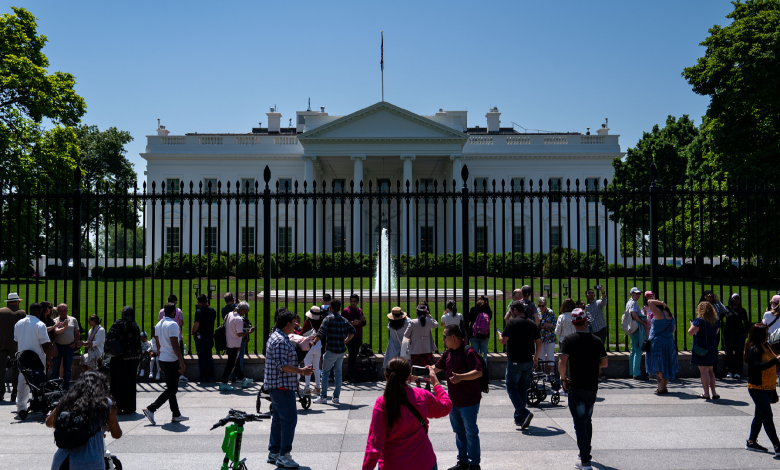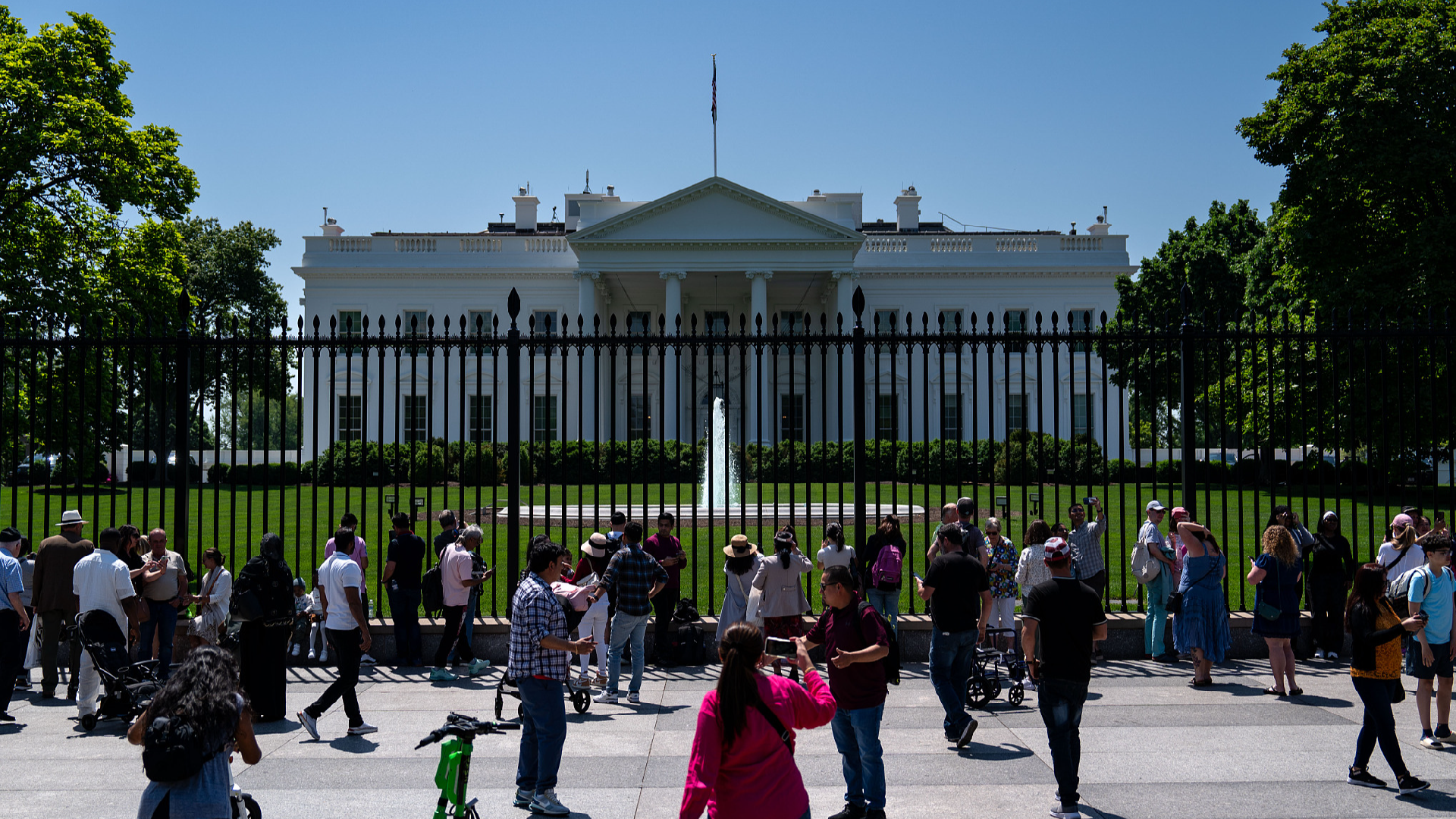U.S. GDP growth pick-up: A solution to the impossible trifecta?


<img src='https://news.cgtn.com/news/2024-07-26/U-S-GDP-growth-pick-up-A-solution-to-the-impossible-trifecta–1vy4rsQsllS/img/c622e24d5e28494eba7cad8115cdadc5/c622e24d5e28494eba7cad8115cdadc5.jpeg' alt='People enjoy the warm weather outside the White House on April 28, 2024 in Washington, DC. /CFP'
Editor’s note: He Weiwen is a senior fellow at the Center for China and Globalization. The article reflects the author’s opinions and not necessarily the views of CGTN.
The U.S. Bureau of Economic Analysis announced on Thursday the advance estimate of the country’s GDP growth in the second quarter of 2024. Contrary to many pessimistic estimates, the U.S. GDP picked up to 2.8 percent growth (annual rate), sharply up from 1.4 percent in the first quarter.
The 2.8 percent GDP growth is good, but at the same time, not as good as it appears. Among the two fundamentals of the U.S. economy, while the personal consumption expenditures (PCE) is picking up, fixed private investment is slowing down. The latter was primarily caused by high interest rates. As mentioned above, the 1.4 percentage-points GDP growth acceleration in the second quarter was primarily contributed by inventory change.
<img src='https://news.cgtn.com/news/2024-07-26/U-S-GDP-growth-pick-up-A-solution-to-the-impossible-trifecta–1vy4rsQsllS/img/9b7eade835ed4fca8ce56985921fefc0/9b7eade835ed4fca8ce56985921fefc0.jpeg' alt='A customer is buying dairy products at a supermarket in Manhattan on July 11, 2024. /CFP'
The Labor Department has announced a set of less optimistic data. First, the consumer price index (CPI) in June rose 3.0 percent over a year ago. Although down from 3.3 percent in May, it was exactly at the same level as a year ago, or the 3.0 percent rise in June 2023, little to do with the U.S. Federal Reserve’s anxious goal of returning to 2 percent. The reason of the stubborn inflation given by the Labor Department was strong demand in the labor market, which has pushed up wages. However, the jobless rate has been rising at the same time, from 3.7 percent in March 2024, 3.8 percent in April, 4.0 percent in May to 4.1 percent in June, a 2.5-years high. To make things worse, the labor participation rate in June was 62.5 percent only, compared to 65-66 percent during the pre-pandemic time.
The low investment and rise in unemployment have been generally caused by the extremely high interest rate imposed by the Fed, with federal fund base rate at 5.25 to 5.50 percent. In turn, the Fed has been blaming all the time the stubborn inflation rate, still no sign of 2 percent, the threshold triggering a rate cut.
Michelle Bowman, a Fed governor, expressed her concern on inflation rise in the first half of 2024. She said that if the recent economic data show a sustainable move towards the 2 percent inflation rate goal, the Fed will start rate cuts. Therefore, any estimates on when the Fed will start rate cuts will be meaningless, leaving it to CPI data changes in the coming months.
Hence, there appears an impossible triangle: high GDP growth, low inflation and low Fed rate. The continuous high GDP growth will push up inflation and thus trigger Fed rate hike. The continuous low inflation will restrain GDP growth and thus trigger Fed rate cut. The continuous Fed rate cut will trigger inflation and thus slow down GDP growth. The current U.S. economy is exactly entangled in this triangle.
<img src='https://news.cgtn.com/news/2024-07-26/U-S-GDP-growth-pick-up-A-solution-to-the-impossible-trifecta–1vy4rsQsllS/img/9871ba8e46234d22b1f39d651d342da1/9871ba8e46234d22b1f39d651d342da1.jpeg' alt='A view of the White House on April 28, 2024./ CFP'
Apart from the impossible trifecta, the U.S. economy is also suffering a chain consequence from the high Fed rates. The high rates have increased substantially the debt service burden of the federal government. It has been estimated that the federal debt interest payment will amount to $1.6 trillion during fiscal year 2024, causing the federal budget deficit at $1.9 trillion for FY 2024, or 6.6 percent of the GDP. The rising federal budget deficit has led naturally to further rise in federal debt which was already at $34.97 trillion by July 24, 2024, or 127.7 percent of the GDP. It in turn cut into federal spending, and thus cut into social welfare expenditure. At the same time, the extremely high Fed rate has caused a very strong dollar, which suppresses exports but encourages imports. In the second quarter, the U.S. exports of goods increased by 1.7 percent year-on-year while imports increased by 7.7 percent. Logically, the mounting trade deficit leads to a trade protection propensity in Washington. If Donald Trump returns to the White House in early 2025, a sharp tariff rise seems inevitable, which in turn, will aggravate inflation and delay the Fed rate cut.
The current impossible trifecta in the U.S. economy will most likely lead to two prospects. First, an economic slow-down. The International Monetary Fund estimated in its latest World Economic Outlook that the U.S. GDP will grow 2.6 percent in 2024, but 1.9 percent in 2025, contrary to the trend of the euro area which will see its GDP growth pick up to 1.5 percent in 2025 from 0.9 percent in 2024. Second, it looks likely that Washington will take more trade restrictive measures, with China as the primary target, an eventuality we must firmly oppose and be fully prepared for.

